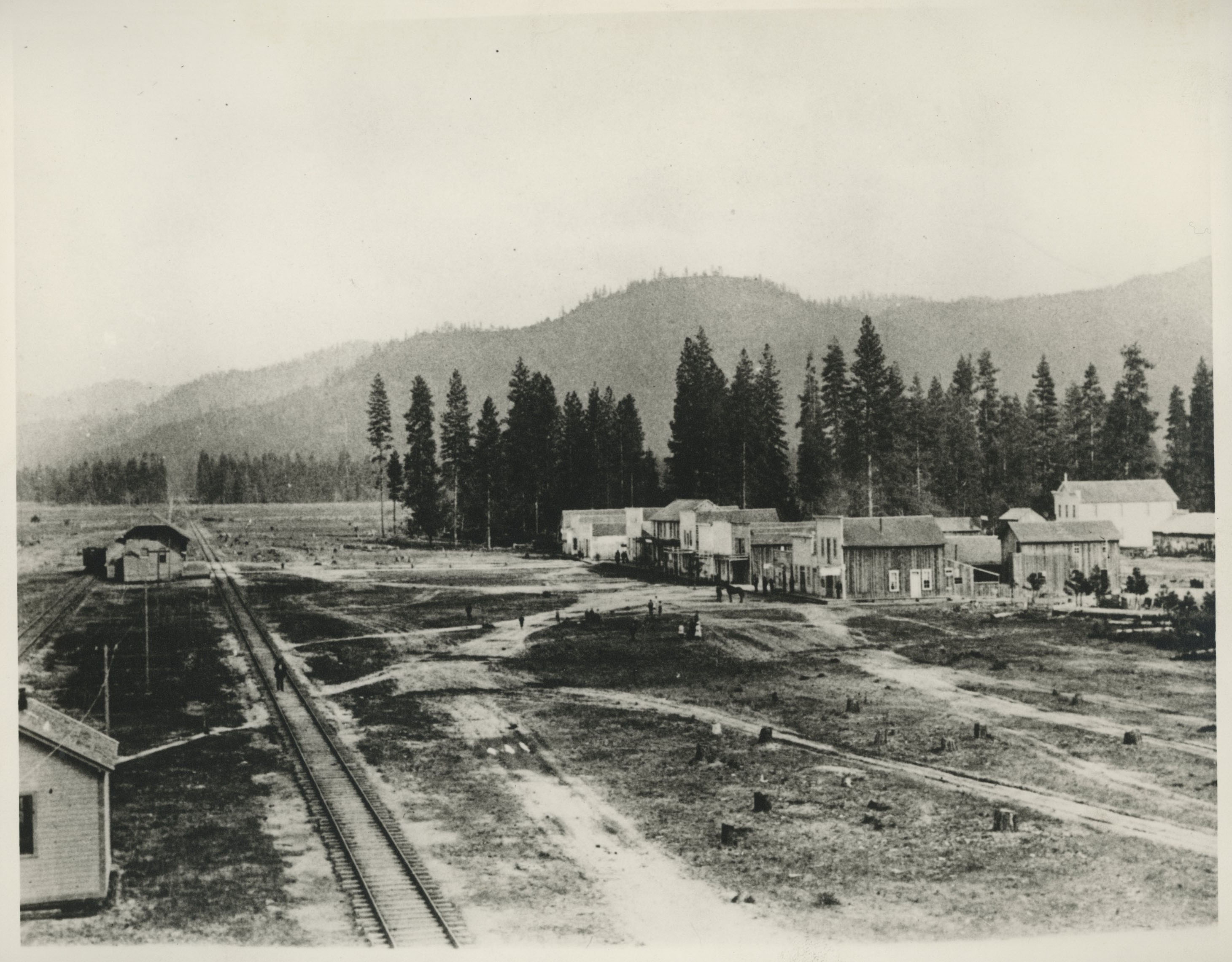During some of the darkest days of the Depression, Grants Pass residents and business owners enthusiastically welcomed the opening of the Rogue Theatre. The eye-catching exterior included bright green, black, and white glazed tiles and a large marquee topped with an illuminated neon sign spelling out the theater's name. The futuristic-looking Art Moderne building combined art, comfort, and entertainment, an antidote to raise the spirits of the community of about 6,000.
Designed by Oregon architect Robert Keeney and constructed for about $65,000 for the Grants Pass Amusement Company, the movie house opened on November 9, 1938, with the showing of the romantic comedy There Goes My Heart. Theater owners and representatives from such film studios as MGM, Paramount, Universal, Columbia, and Fox traveled to Grants Pass to join in the celebration. The group hoped to use its economic and public relations influence to promote the theater as a way to encourage rejuvenation of the depressed downtown.
The two-story structure in the heart of downtown Grants Pass seated 720 people, including 212 in the balcony. The interior included plush silk drapes, maple leaf looped-designed carpet, wine-red opera chairs, comfortable restrooms, tapestries, and a modern sound system. To enhance the acoustics, engineers covered the auditorium walls with balsa wood and fireproofing materials, which remain in the building today. Wall sconces—an innovation at the time—provided soft, indirect lighting for patrons. At night, the distinct neon marquee with its flashing Sally Rand fan was the most visible building for blocks.
For architects, the Rogue represented a break from the ornate theaters of the past and a step into the world of the urbane and sophisticated. It was one of the few theaters constructed in Oregon during the 1930s. The building’s bold colors, smooth aerodynamic lines, and a sleek exterior signaled an optimistic look toward the future and advancement in technology.
Throughout the 1940s and 1950s, crowds filled the Rogue to watch first-run films, newsreels, and cartoons. By 1943, the theater had replaced the State and Rivoli as the most popular movie house in town. Long-time residents remember young couples sequestered in the balcony, family outings, and free admission to soldiers during World War II. With the advent of television and multiplexes in the 1960s and 1970s, however, the movie house became second-choice entertainment. Costs to modernize the interior, upgrade equipment, and rent first-run films became prohibitive. On New Year’s Eve 1999, the Rogue became the last of the town’s original downtown movie houses to close.
The following year, business leaders and community volunteers, led by local songwriter Greg Tressel, formed a nonprofit arts organization, Rogue Productions, LLC. Using grants and donations, the Rogue Theatre reopened as a regional performing arts center. The building, which retains nearly all of its original integrity and characteristics, was listed on the National Register of Historic Places in 2005.
-
![Rogue Theatre]()
Rogue Theatre.
Rogue Theatre Courtesy Gary Halvorsen, Oregon Historical County Records
Related Entries
Map This on the Oregon History WayFinder
The Oregon History Wayfinder is an interactive map that identifies significant places, people, and events in Oregon history.
Further Reading
"National Register of Historic Places. May 19, 2005.
"Rogue Theatre opens to enthusiastic crowds." Grants Pass Bulletin. November 11, 1938.
Peterson, Tom. "The last picture show--the Rogue closes after 61 years of fun." Grants Pass Daily Courier. January 4, 2000.


